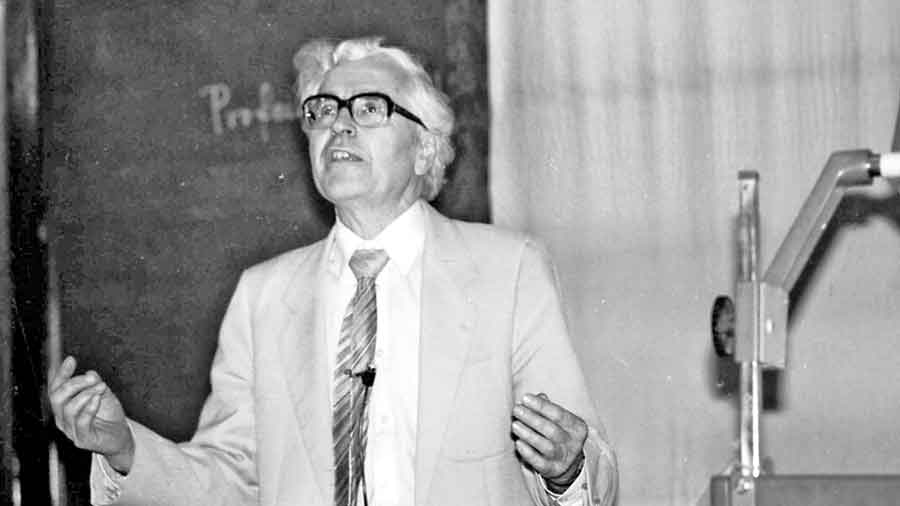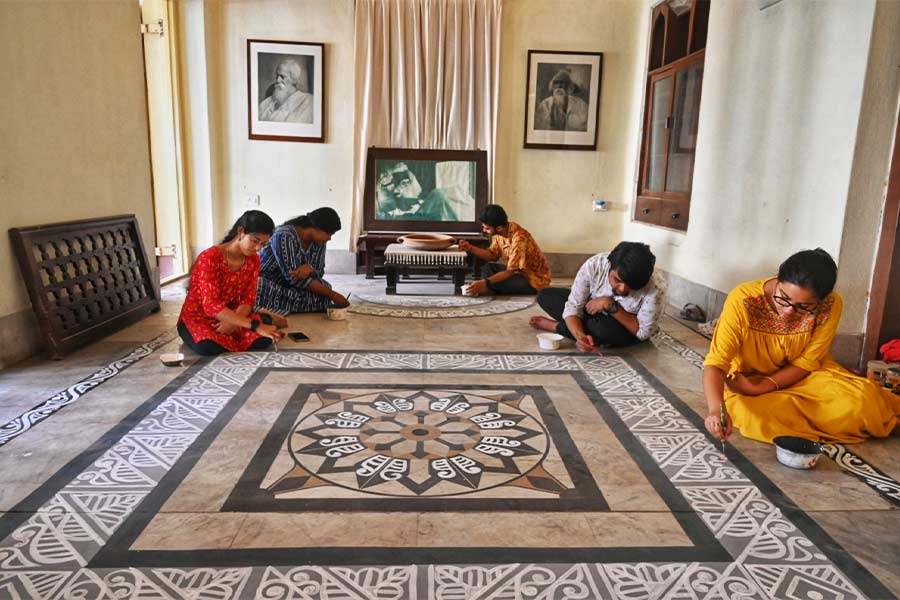Nobel Laureate, Professor Antony Hewish FRS, Honorary Fellow of Gonville Caius College, Cambridge had died on September 13, 2021. He was 97.
He took admission in Cambridge as an undergraduate in 1942 at the age of 18 to read Natural Science. After matriculation, during the Second World War he worked with Sir Martin Ryle, his fellow radio astronomer on telecommunications, in particular with airborne “radar — counter — measure” devices. It was this firsthand experience with electronics and antennas, coupled with the inspiring influence of Jack Ratcluffe, his teacher, that led him to focus on radio astronomy, a relatively new field of activity in Cambridge in the early 1940s.
Ryle and Hewish won the Nobel prize for physics in 1974 for their “pioneering research in radio astrophysics, Ryle for his observations and inventions, in particular of the aperture synthesis technique, and Hewish for his decisive role in the discovery of pulsars”. Pulsars are cosmic objects that emit extremely regular and precise pulses of radio waves.
Their young colleague Jocelyn Bell, a student of Tony (Antony), did the actual recording of the radio pulses but the Nobel Committee decided to bypass her. She did not contribute anything substantial intellectually — that was the argument!
Why did it take so long before pulsars were discovered? The answer quite simply is that radiostronomers were not looking in the right way. So, Tony started designing and constructing large phased array in 1967 for a whole sky survey of the “twinkling” radio galaxies (galaxies which emit radio wave). Eventually, Tony and Jocelyn Bell could manage a radiation of down to 0.1 sec, which means, two signals happening with a time gap of 0.1 in the sky could be detected clearly. The radio signals from typical pulsars were sending flashes every one second, much above the 0.1 sec resolution, which can be easily detected.
This was 1967. Gold shortly after that suggested that pulsar was the rotating neutron star. The very first spinning neutron star ordinarily would throw out everything in its core because of the huge centrifugal force, pushing everything outwards. Neutrons decay within a few minutes to protons and neutrons but under the very high pressure when the supernova collapse, nuclear fuel having run out and the gravity simply taking over followed by a massive explosion. The glow of the explosion is the supernova. Chinese observed it in 1054 AD in the open sky by the naked eye. Neutron stars rotate and send the radio signals, Bell, Hewish, Ryle detected those signals in 1967, consequent to neutron stars pulsating radially.
Rutherford while discovering the atomic nucleus in Manchester, UK, in the beginning of the last country predicted the existence of a particle of no charge slightly heavier than proton; it was not until in 1932 that Chadwick in Cambridge discovered neutron, — and — it took another 40 years for Hewish et. al. to discover neutron star.
Tony thought the pulsar blips were signals from extraterrestrial intelligence, the “little man” signalling from outer cosmos. Eventually, they realised they had discovered “neutron stars”. The first time in the history of the Nobel prize, observational astronomers were awarded the prize. It was a great discovery, path breaking and remains even now a very active field.
Tony Hewish was my laboratory teacher at Cavendish in Cambridge, 1964-67. He was obviously in the thick of his research on pulsar; at that time, we had no clue though I still recall Tony never gave me more than ß+ for my lab work; I resented his markings at the time, but looking back, he was probably right.
Caius College had another illustrious resident, undergraduate and then a Fellow, Homi Jehangir Bhabha.
Homi was back in India building his dream Tata Institute of Fundamental Research and Atomic Energy establishments at Trombay when Tony with Martin was busy tracking down the blipping pulsars. Two more great scientists were nurtured by Caius College - Fraricis Crick, with Watson he discovered DNA, human gene mystery carrier of all the most relevant information, and Stephen Hawking, who discovered that black holes radiate.
Tony Hewish after a long gap of time came to India, and Calcutta in particular, to pay his tribute to the pioneering astrophysicist, Meghnad Saha, who metamorphosed astronomy to astrophysics by his equation on Ionisation; it was revolutionary. Tony was scheduled to deliver the 32nd Meghnad Saha Memorial lecture in 1993. His subject was “Pulsar Physics”. I quote Tony’s introductory remarks in that historic lecture: “I am delighted and honoured to present this lecture in memory of Meghnad Saha. He was a brilliant scientist and is well known as one of the founders of modern astrophysics for his pioneering work in the use of atomic spectroscopy to probe the physical properties of the universe. He is remembered also for his humanity and wider vision for India. The recollections of those who knew him personally mention his total lack of any pretensions or pomposity, his kindness to young students, his lectures “off the cuff” when he had forgotten that he had a class. These characteristics remind me of the late Sir Martin Ryle who played so major a role in the development of radio astronomy and established the lively group in which I started my research.
I think that Saha would have relished the kind of physical problems that arise in connection with pulsars.
It is now 26 years since our discovery of the first pulsar at Cambridge and in our announcement of this breakthrough we mentioned the possibility that this new type of star, possibly a neutron star, could lead to a better understanding of super-dense matter. In the quarter-century since then this hope has been amply fulfilled. Formed during the gravitational implosion of massive stars contain matter at densities around 100 million tonnes per cubic centimetre and magnetic fields up to 1013 gauss, their impact on astrophysics has been immense and they have stimulated research in many different branches of physics.”
Tony Hewish is now dead, Martin Ryle died some time ago. Jocelyn Bell is around, she is enjoying for all I know the glory she missed out in the 1960s and 1970s.
Radio astronomy has become very broad research activity in the world, including India; Giant Metre Wave Radio Telescope in Pune is as excellent example. Govind Sworup did that brilliant job astonishingly brilliant job.
However, the first blips “heard” by Hewish, Ryle and Bell more than 50 years ago from the pulsars are not signals from the “little man” from outer space but they are the signals from a small star dense beyond imagination at the centre of the collapsing supernova.
Supernova collapses at the enormous pull of its own gravity when the nuclear fuel finally burns out and the star begins to collapse. The marvel of the star is the very precise radio signals sent by it.
After more than 50 years neutron stars remain a store house of cosmic surprises — just recently, binary neutron stars have demanded a good deal of attention for the detection of gravitational waves.
In the fearful chaos and perennial and tragic anxiety about climate change, with an entirely possible breakdown of the human civilisation, we so much value, the precise time of pulsars stand out as an enigma; it has been there long before humans started inhabiting this planet and it will be there long after humans are perished forever. We would never learn the grace of tragedy.
Bikash Sinha is an INSA senior scientist; former Homi Bhabha Professor, DAE; former director of Variable Energy Cyclotron Centre and Saha Institute of Nuclear Physics, DAE






